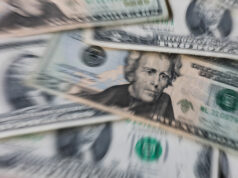Peso deemed among most resilient currencies in Asia — DoF
THE peso was among the more resilient currencies in Asia amid rising uncertainty and volatility in global financial markets, the Department of Finance (DoF) said.
In an economic bulletin posted Friday, Undersecretary and DoF Chief Economist Gil S. Beltran said the peso’s year-to-date performance made it among the currencies in the region that “maintained their value against the dollar.”
As of March 10, the peso strengthened by 0.28% against the dollar, putting it behind only the yen, Hong Kong dollar and renminbi, which gained 4.27%, 1.82% and 0.33% against the dollar, respectively.
“Despite the volatilities in the global economy, made more uncertain by the spread of Covid-19, the collapse of global stock markets and trade restrictions imposed on each other by the world’s top trading economies, the Philippine peso remained firm,” according to the bulletin.
Other currencies depreciated against the dollar including those of India, Singapore, South Korea, Thailand, Vietnam, Indonesia and Taiwan.
“The peso-dollar exchange rate also remains stable throughout the period. Its coefficient of variation at 0.27%, ranked 2nd behind the Vietnamese dong among 12 regional currencies and lower than the 1.19% Asian average,” it said.
Mr. Beltran attributed peso’s “growing strength and stability” to the country’s balance of payments position (BoP) and increasing gross international reserves (GIR) boosting confidence in the currency.
“Strong macroeconomic fundamentals support the country’s financial position. Manageable budget deficits and prompt adjustment of monetary settings in response to current developments help maintain investor confidence,” it said.
The BoP was in surplus by $7.843-billion in 2019, the largest since the $9.236 billion posted in 2012.
Meanwhile, GIR totaled $87.84 billion at the end of 2019, equivalent to 7.7 months’ worth of imports of goods and payments of services and primary income.
“Strong foreign exchange inflows from exports of services, remittances, income from investments abroad, direct foreign investments and foreign borrowing all contributed to the strong BoP position. These in turn boosted the confidence in the Philippine peso,” according to the economic bulletin. — Beatrice M. Laforga



